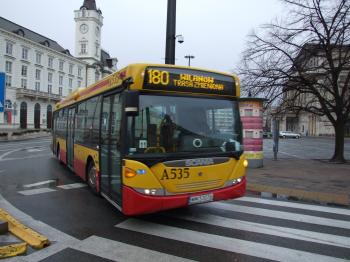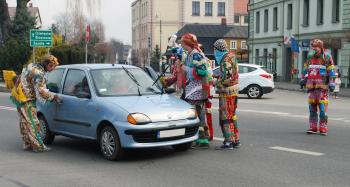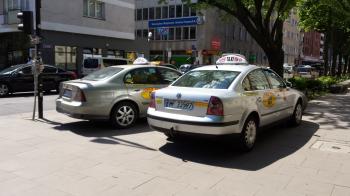Getting Around Warsaw
Getting Around Warsaw
All City Transport Options: What Locals Use and What’s Best for Tourists
General Overview
When using Warsaw's public transport, many visitors think they can just hop on any tram and figure it out on the fly. Trust me, it’s not that simple! Warsaw’s transit system is pretty efficient, but it can feel a bit chaotic if you’re not in the know.First off, the main types of public transport include trams, buses, and the metro—all generally reliable and quite affordable, especially compared to many Western cities. Most services run from around 5 AM to midnight, but you’ll find night buses on certain routes if you’re out late. For a basic ticket, you’re looking at about 4.40 PLN for a single ride, which is a steal compared to places like Paris or London. Plus, if you're planning on cruising around a lot, consider a tourist pass; while a regular ticket is 4.40 PLN, a 24-hour tourist pass costs about 15 PLN.
Oh, before I forget, a common mistake I made on my first trip was taking the express bus without realizing it didn’t stop where I needed—definitely had to backtrack to a different tram line!
Now for the local hacks: download the Jakdojade app right away. It’s a lifesaver! I once installed it while wading through the confusing mesh of tram numbers. Just type in your destination, and it’ll show you exactly what transport to take—super handy!
A little frustration I faced was during rush hour. If you're trying to get to the city center—let's say Marszałkowska Street—around 8 AM, just know it’s going to be packed! Everyone gets pretty cozy, so if personal space is your thing, maybe wait for the next tram (that's a local tip). On a brighter note, I was pleasantly surprised by how clean and well-maintained the transport systems are; I always appreciate that kind of attention!
Weather can affect your travel too. During winter, delays can be a bit more frequent due to the snow, so keep that in mind. Like, you might want to leave a bit earlier if you have somewhere to be.
Lastly, don’t forget to bring some change or a debit card for tickets and always keep an eye on your belongings, especially during busy times. That’s a good rule of thumb anywhere really.
So, next time you're navigating through Warsaw, just plan a little and keep your eyes peeled—it's a thrilling urban experience!
Types of Transport

popular with tourists
The bus system in Warsaw is extensive, covering all key tourist areas including the Old Town, Łazienki Park, and the National Museum, making it a convenient choice for travelers. Tickets can be purchased from ticket machines located at most bus stops, in shops, or via mobile apps, with typical costs being around 4.40 PLN for a 75-minute ticket valid on all buses within the zone. A helpful tip is to always validate your ticket upon boarding by stamping it in the small machine, as failing to do so can result in fines. For time-saving advice, check the real-time arrival information available in many bus shelters or download the 'Jakdojade' app, which provides accurate public transport navigation. Finally, keep an eye on your belongings, especially in busy areas, to ensure a safe travel experience.

popular with tourists
The tram system in Warsaw is extensive, covering major tourist attractions such as the Old Town, Palace of Culture, and the Vistula Boulevards, making it a convenient option for exploring the city. Tickets can be purchased from ticket machines located at tram stops or via a mobile app, with typical costs around 4.40 PLN for a single ride and 7 PLN for a 75-minute ticket, which allows transfers between trams. A key tip for tourists is to always validate your ticket before boarding by stamping it at the designated validation machine, as failing to do so can result in a hefty fine. To save time, consider using the tram’s real-time arrival information available on various apps or display boards at stops, which helps you plan your journey more efficiently. Lastly, while trams in Warsaw are generally safe, be mindful of your belongings, especially during crowded hours.

The auto availability in Warsaw is quite good, with a variety of rental services and ride-sharing options like Uber and Bolt. Renting a car typically costs around 150-300 PLN per day, with most companies requiring a credit card for payment and a valid driver's license, so be sure to bring all necessary documents. For tourists, driving on key routes such as the Wisłostrada along the Vistula River offers scenic views and quick access to major attractions like the National Stadium and the Old Town. Remember that parking can be challenging in bustling areas, so consider using paid parking zones or park-and-ride facilities on the outskirts and then utilize local transport or walking to explore. Lastly, be mindful of local driving regulations, especially the implementation of low-emission zones in the city center, which may require additional fees if driving older vehicles.

Taxis in Warsaw are widely available and can be hailed from the street, booked via phone, or ordered through a mobile app such as Uber or Bolt, which are popular and reliable options. The typical fare from the city center to destinations like the Old Town or Warsaw Chopin Airport ranges from 20 to 40 PLN, depending on traffic and the exact distance. For tourists, it's important to always check that the taxi has a visible taxi sign and a functioning meter to avoid overcharging, and make sure to ask the driver for an estimated fare if you're unsure. If you're traveling late at night, consider pre-booking your taxi, as street availability may decrease and fares may increase. Lastly, ensure you have cash on hand, as not all taxis accept credit cards, although many nowadays are equipped with card payment terminals.

The metro in Warsaw operates two main lines, M1 and M2, which cover crucial areas including the city center, major attractions like the Palace of Culture and Science, and the historic Old Town. A single ticket costs 4.40 PLN (around $1) for a 75-minute journey, and you can purchase tickets at ticket machines located in metro stations or via the mobile app; be sure to validate your ticket before entering the platform. For tourists, it's advisable to use the M2 line to reach popular destinations such as the Wilanów Palace or the National Stadium, ensuring you get off at the right stop. To save time, download a metro map or a navigation app that works offline, which can help you quickly find the correct routes. Finally, while the metro is generally safe, keep an eye on your belongings during busy hours, and try to avoid sitting next to unoccupied bags.
Here you can learn about all types of transport in Warsaw. What transport is available, how to reach tourist attractions and which mode of transport is optimal.
